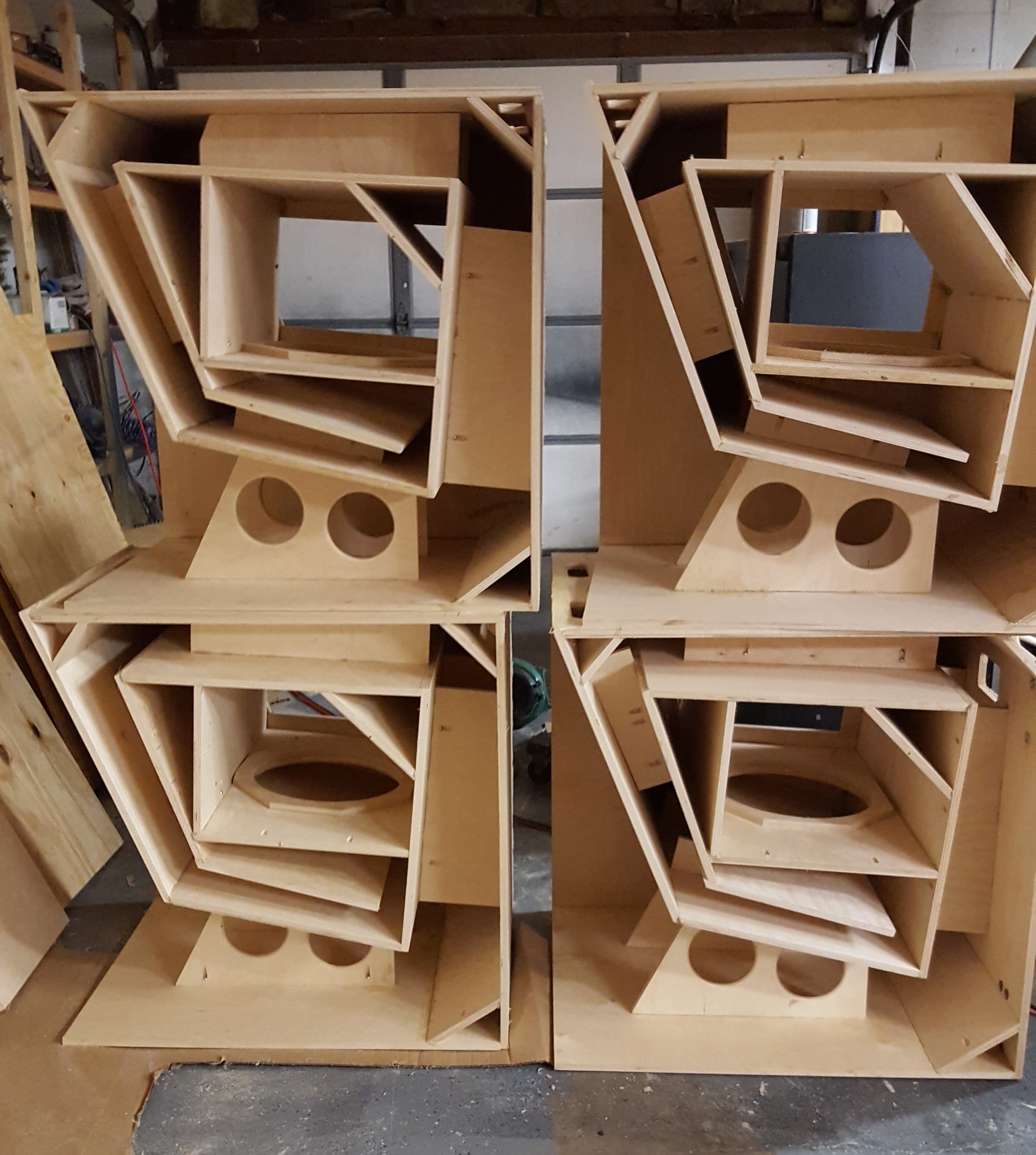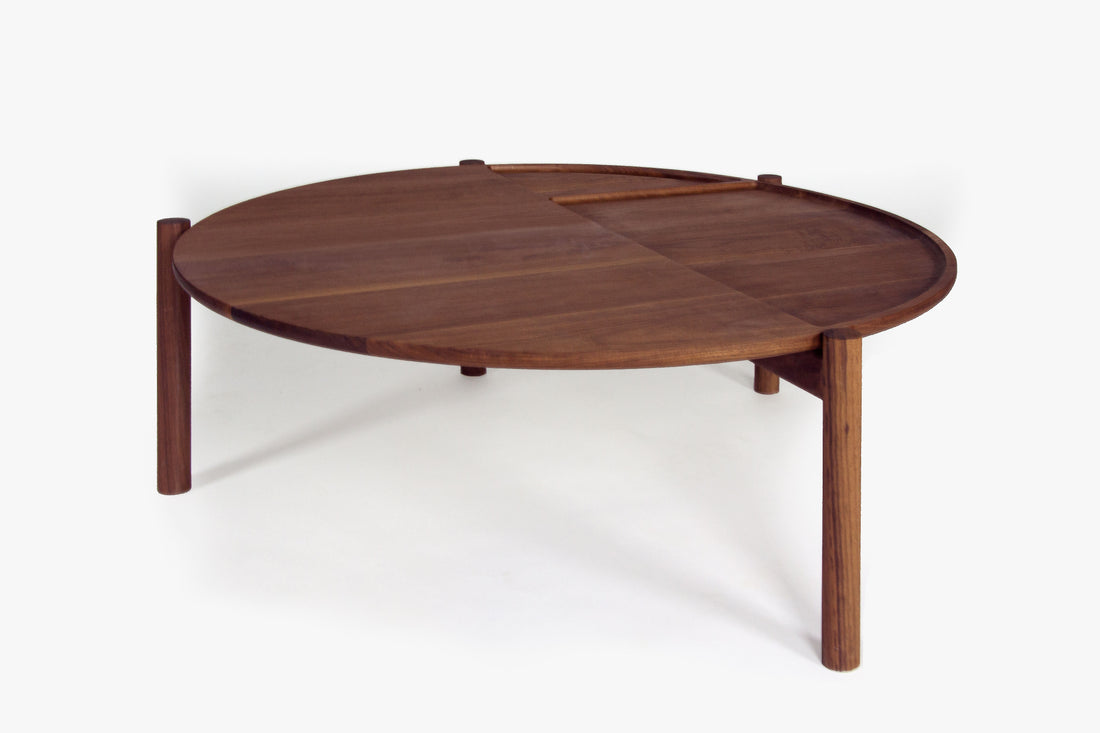Table Of Content

A 2-way active crossover is used to split bass from the mid and high frequencies, this requires one amp for Bass, and one for mid-high. The Mid-High cabinet then utilises an internal passive crossover to split between Mid and Treble. This is a very common solution, as it provides a good balance of versatility and cost. So reaching this decision on the low pass filter for the woofer has been influenced by the impedance measurements of the woofer, which resulted in a different impedance being used for the crossover calculations. In addition to this I have looked at the frequency response and aimed to smooth the mid response and suppress any large peaks on the response. I have used past experience to judge the result from the 8″ I am aiming for, and settled on a solution once the response is looking close to what I am aiming for.
as I learn new things or find better descriptions. The designs presented here
The other method is to slope the front of the boxslightly so that the drivers align. And a consumer electronics journalist with nearly 20 years of experience writing news, reviews and features. Over the years he's also contributed to a number of other outlets, including The Sunday Times, the BBC, Stuff, and BA High Life Magazine. Premium wireless earbuds are his passion but he's also keen on car tech and in-car audio systems and can often be found cruising the countryside testing the latest set-ups.
DIY Audio Speaker Building Guide / FAQ
This greatly simplifies crossover construction and gives you morecontrol over bass. The mid and tweeter should be at roughly the ear level of the listener(when sitting) so that the sound doesn't seem to come from above or below. The necessary volume for the woofer comes fromthe box's height, which is tall enough to allow the mid and tweeter to be at ear level.Since the box is thin, there is no wasted area (or wood) in the box. NHT, Klipsch, andDefinitive Technologies are a few of the companies that design speakers like this. I have seen prebuilt 2-way boxes and premade crossovers that could make building a 2-way systemvery easy. The boxes were made of plywood, were stapled together, and were unfinished.Sometimes, cheaper wood is acceptable for a speaker system that doesn't have a powerful woofer.These speaker boxes run about $40.
Subwoofers Add More than Bass. This Is Why Every Hi-Fi Setup Needs One
No discussion of electrostatic loudspeakers would be complete without mentioning the classic electrostatic loudspeaker, the QUAD ESL-57, created in 1957 by Peter Walker. The ESL-57 revolutionized the standard for transparency upon its introduction, and still holds it own more than 60 years later. Many listeners’ first exposure to high-quality audio was through an ESL-57. A large number of contemporary loudspeaker designers still have a pair of ESL-57s on hand as a reference.
A cheap 1st order high & low crossover built into abinding post can run about $30. For $50 plus cost of drivers, you could have a cheap 2-way system.This could be the answer if you were looking for a cheap simple speaker, but then why are you building one at all? Firstly, modern materials used in the construction of voice coils are able to withstand significantly higher temperatures before failing. Well Cone loudspeakers are in fact very inefficient, with even the best transducers only converting around 5% of the electrical energy supplied into sound, the majority of the remainder is converted into heat. So a 1000W bass speaker running at full power may well be converting only 50W into acoustic power, and 950W of heat.
Ten Nonsense Myths About Subwoofers and Bass Busted!
The electrostatic loudspeaker needs to be placed well out into the room and away from the rear wall to realize a fully developed soundstage. Electrostatics also tend to be insensitive, requiring large power amplifiers. The load impedance they present to the amplifier is also more reactive than that of dynamic loudspeakers, further taxing the power amp. (Reactance is described later in this chapter.) Nor will they play as loudly as dynamic loudspeakers; electrostatics aren’t noted for their dynamic impact, power, or deep bass. Instead, electrostatics excel in transparency, delicacy, transient response, resolution of detail, stunning imaging, and overall musical coherence. The manufacturer specifications for drivers can only help so muchin determining speaker box volume and crossover design for your system.

Start listening
The next result shows the frequency responses with woofer and tweeter together as a system. The orange plot is a Linkwitz-Riley 12dB filter at 2500Hz, calculated with 11 ohm impedance, and the blue plot is Linkwitz-Riley 12dB filter at 2000Hz, also calculated for 11 ohm impedance. The peak at 3.5kHz is being gradually suppressed, and getting closer to the frequency response I want from the 8″ woofer.
I have seen similar crossovers used in ‘audiophile’ speakers costing many thousands of pounds. This design approach provides for a compact crossover, which can be easily fitted inside a typical 8″ + 1 ” speaker cabinet. In the debit column, electrostatic loudspeakers must be plugged into an AC outlet to generate the polarizing voltage. Because the electrostatic is naturally a dipolar radiator, room placement is more crucial to achieving good sound.
Understanding Loudspeaker Review Measurements Part II
In nature, loud sounds, with an emphasis to low frequencies are often connected to danger. Just think of the sounds created by a stampeding herd of animals, an earthquake or a volcano erupting. Research suggests that years of evolution have developed the ‘fight or flight’ response in humans when presented with danger, this stimulates the production of adrenaline, enhancing the bodies ability to react to the danger. First thing you will notice is that the smiley face equaliser curve is remarkably similar to the frequency response of the ear, but offset a little with the centre point around 3kHz and more emphasis on low frequencies.
Wireless Miniature Outdoor Speakers - Trend Hunter
Wireless Miniature Outdoor Speakers.
Posted: Fri, 17 Nov 2023 08:00:00 GMT [source]
The Audio Engineering Society (AES) provides resources & guidelines, aiding in distortion testing & promoting standardized evaluation of hi-fi speakers. Listening tests are, after all, the only socially acceptable way to judge sound quality–unless you’re judging your neighbour’s tunes. To get the right listening experience and avoid problems with impedance, you must choose compatible speakers and amplifiers that provide enough power. His innovation revolutionized speaker design and improved audio quality. It’s key to good sound reproduction and an immersive audio experience.
A matched LPF and HPF that usually share the same cut-off frequency form a system known as a crossover. With a simple two-way system, crossover frequencies of between 1200 Hz and 3000 Hz are common, depending on the components used. Tweeters can not handle bass frequencies, lots of bass into a tweeter would destroy it. Tweeter must have high frequencies only, limited to the frequencies the tweeter is designed to handle.
The general ruleis stay away from perfect cubes, and use a rectangle box with beveled edges on the front.Sharp edges on the front of the speaker box will cause distortion, so rounding the edgescan make a world of difference. "It’s helpful to know what materials make the most difference sonically, so that you can adjust compromises without having a dramatic effect on sound quality. As soon as the initial concept is complete, you can start listening. It is important, early on, to know what the product might sound like. A discerning ear is key to a loudspeaker’s fate, although having the latest tech also helps.
Vivid Audio Launches Their New Flagship Speaker: the Moya M1 - Twittering Machines
Vivid Audio Launches Their New Flagship Speaker: the Moya M1.
Posted: Thu, 14 Mar 2024 07:00:00 GMT [source]
Dipolewoofers have the advantage of less room mode excitation and thus preserve articulation in bass sounds. Crossover design is essential in Hi-Fi speakers because it determines how different audio frequencies are distributed among the various drivers. A well-designed crossover ensures seamless integration of drivers, minimizes phase issues, and allows each driver to handle the frequencies it is best suited for.
Located in Atlanta, the College’s picturesque campus is home to 2,300 students. Spelman is the country's leading producer of Black women who complete Ph.D.s in science, technology, engineering, and math (STEM). New majors and minors have been added, including documentary filmmaking and photography, data science, refugee studies and gaming.
The soundwaves produced by the sub start out directed away from the driver, but the 50' long waves willreflect off the walls of the room many times so that it is near impossible to determine whatdirection the sound is coming from. So there is no need for expensive large woofers in yourmain speakers. Since subwoofers are usually self powered you don't need as powerful anamplifier for your main speakers either. Joel Foust's experience in quality control, product certifications and do-it-yourself loudspeaker design bode well for the consistent application and development of in-depth loudspeaker testing.
Again, we don't have the woofer driver displacement, so we will use our calculator to estimate it.Here is the ScanSpeak diagram. Now we are ready to use theSpeaker Box Enclosure Volume Calculator to determine the outer dimensions of the speaker box.Also be sure to read the Help for the Speaker Box Calculator. The speakers need breathing room of at least 1m to the nearest large reflecting surfaces and a room with a minimum floor sizeof 25 sqm. The Absolute Sound is the world’s preeminent source of expert reviews, features, and commentary on high-performance audio and music. Variations on ribbon technology have produced drivers having many of the desirable characteristics of ribbons but few of the disadvantages.






















